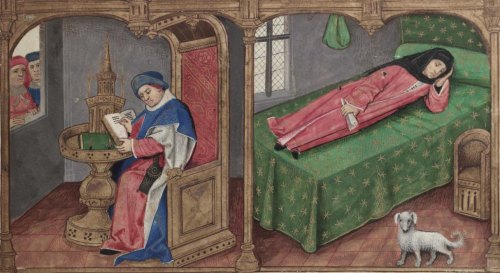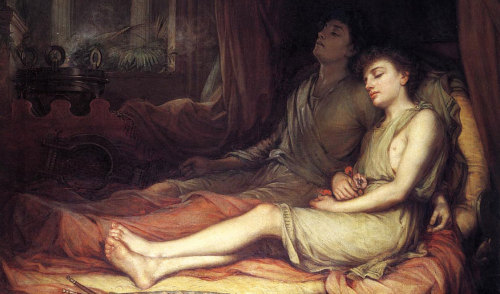A Good Nights Sleep in Ancient and Medieval TimesToday, when one gets a good nights sleep, one typic
A Good Nights Sleep in Ancient and Medieval TimesToday, when one gets a good nights sleep, one typically goes to bed in the middle of the night, gets a good 7-8 hours of continuous sleep (if possible), and it greeted by the new day with the blaring of an alarm clock. However, that was not they most of humanity slept throughout history. Rather, the eight hour night is mostly a modern invention created by modern industrialism. Throughout most of history, humans practiced a type of rest called “bifurcated” or “segmented sleep”. Rather than sleeping in one long stretch, people turn in for bed at dusk, sleep for four hours, then enjoy a period of wakefulness last about 1-3 hours. During this period of wakefulness, people would do a variety of things. First and foremost, people would check the fire and ensure that the home, crops, and livestock were still secure. Afterall, this was an age when outlaws were common and regular law enforcement was rare. During this time people would play games, spend time with the family, take a walk through the neighborhood, or even socialize with the neighbors. During this period it was not uncommon for pubs and taverns to re-open, so one my have an ale or mead and chat with friends before turning in again for “second sleep”. Many scholars considered this period to the perfect time for focusing and learning, so it was often a time for reading, studying, reflection, or philosophizing. A French doctor from the 16th century reported that this time was often a time used by bedfellows to have sex. For monks and priests, it was often a time for prayer and meditation. Once this period of wakefulness was done, people would return to bed for “second sleep”, which lasted until sunrise. Often many cultures assured there was no sleep deficit by adding a siesta, usually early afternoon.The practice of bifurcated sleep probably occurred throughout most of human history. Such a sleep pattern is mentioned in a variety of sources, including Homer’s Odyssey, the Bible, and Chaucer’s Canterbury Tales. The practice of bifurcated sleep began to die in the 17th century. What killed it off entirely was the industrial revolution, where inventions such as electricity, street lighting, and 24 hour a day shift work put an end to bifurcated sleep, demanding more compact sleeping habits. Modern scientific sleep studies suggest that humanity has not quite gotten over this ancient practice, as circadian rhythms are still adjusted to an awake period in the middle of the night. Today, the sleeping habits of modern peoples in industrialized countries are especially appalling, with millions suffering from chronic sleep shortages, especially when it comes to precious REM sleep. Many suffer such deprivations due disorders such as sleep apnea and insomnia. Others suffer under a society which values productivity over health. Perhaps we as a society should rethink how we sleep, and take a queue from our ancient and medieval ancestors? -- source link
Tumblr Blog : peashooter85.tumblr.com
#history#sleep#health#middle ages#ancient history#bifurcated sleep#segmented sleep


